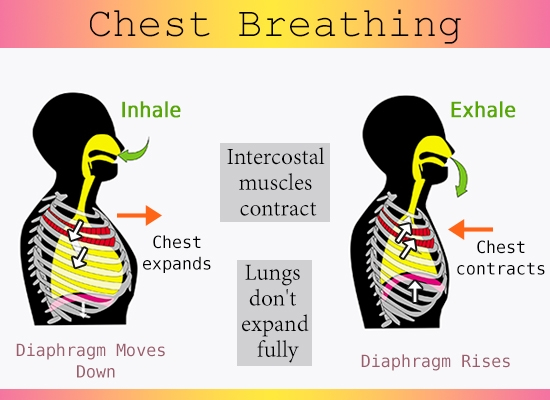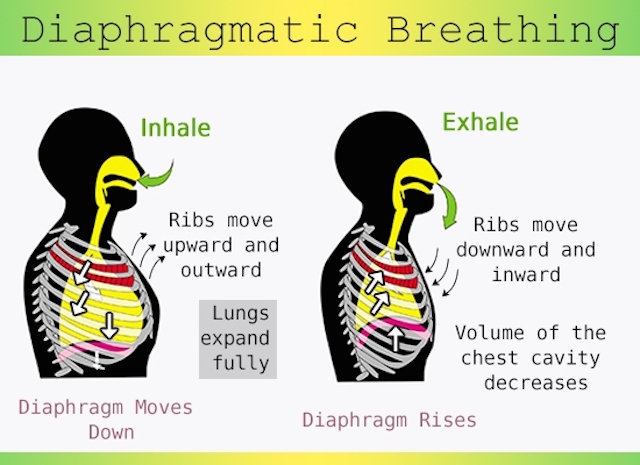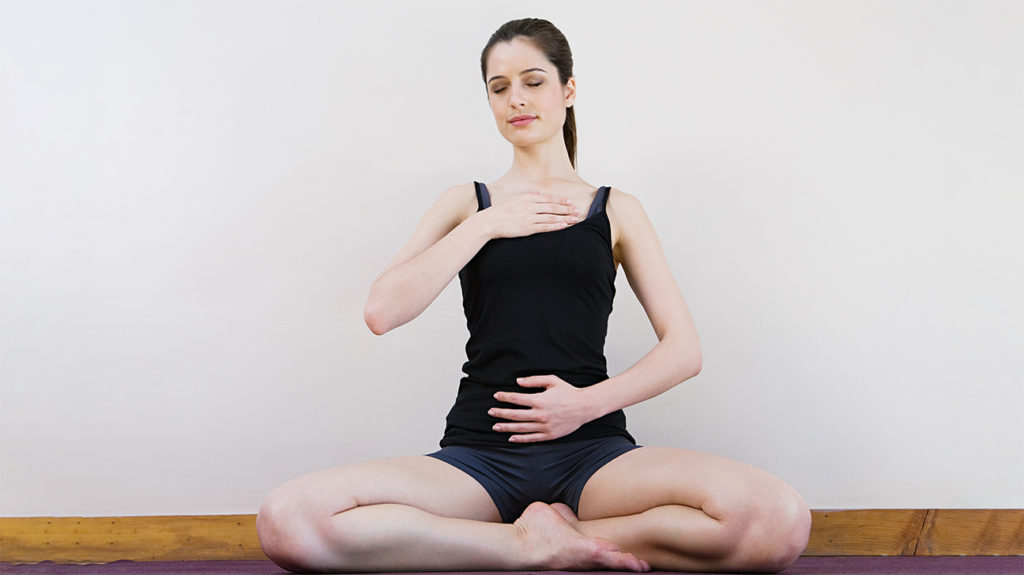Hi my name is Martha De Buitlier, I am a Fully Accredited Buteyko Practitioner and Founder of Easy Breathing. I am often asked for simple breathing exercises to help people with breathing issues. Firstly it is important to have some idea what a normal breath should be. We do not give much thought to this and think whatever or however we breathe is just how it is. So since we breathe 1800 breaths an hour (based on 16 breaths a minute ) it is worth giving some attention to this.
For the record each breath should be soft, through the nose, diaphragmatic and gentle on the exhale….24/7 . Yes day and night , when you are working , watching TV, Climbing the stairs and when you sleep at night.
In this article I am going to explain how you can breathe better with three simple breathing exercises using the butyeko method so you can live a healthier lifestyle especially if you suffer from chronic breathing issues.
Awareness of how you breathe.
The first step is to become aware of how you breathe. Most people never really think much about how they breathe, especially doing everyday activities. However It is important. Bringing your attention to this is the first step in managing your condition no matter what age you are.
Do you mouth breathe or breathe through your nose?
Breathing Exercise #1.
The first exercise is to nasal breathe more in and out through the nose. This in itself encourages diaphragmatic breathing. It also very importantly cleans and humidifies the air and offers some resistance to when we take a breath.
If your nose has a tendency to block this is the first exercise.
Please note: Not suitable for people with uncontrolled hypertension or during pregnancy.( Go to next exercise short breath holds)
Unblocking your nose exercise:
- Close your mouth.
- Breathe in through your nose.
- Breathe out through your nose.
- Towards the end of the out breath pinch your nose and hold.
- As you hold your breath you can sway from side to side, bob your head or just sit still.
- When you feel you need to take a breath in, breathe in through your nose.
- Repeat five times.
Breathing Exercise #2.
The next Exercise is Short Breath Holds.
Suitable for all ages.
Particularly useful if you suffer from wheezing, palpitations or panic attacks.
- Breathe in gently through the nose.
- Breathe out (through the nose)
- Pinch your nose towards the end of the out breath.
- Hold for five seconds.
- Let go and breathe in gently through the nose. (very important)
- Take a Normal breath.
- Repeat x 5 times.
Please note. Some of you may find it difficult to hold your breath for five seconds. In that case start with two seconds. When comfortable with that, move to three seconds, then four and on to five seconds when ready.
There is no need when doing this breathing exercise to hold your breath for longer. The benefit is in the repetition.
Breathing Exercise #3.
Diaphragmatic Breathing.
The diaphragm is the main breathing muscle. The diaphragm in normal health does over 75% of the work of breathing at rest. Diaphragmatic Breathing is far more efficient than chest breathing. Most of the people I see have predominantly chest breathing. This in part, has developed over the years due to illness, acute or chronic, more sedentary jobs, lifestyle, poor breathing habits and for some lack of exercise. Over time it has a detrimental effect on health.
Why? Because how we breathe effects our circulation and this can put a stress on the heart.

Chest breathing:
Chest expands and diaphragm moves down when a person inhales.
On exhale the chest contracts forcing CO2 out of the lungs which causes the diaphragm to rise.

Diaphragmatic Breathing:
On inhale a persons ribs move upward and outward allowing the lungs to expand fully.
When a person exhales the diaphragm rises pushing the ribs downward and inward.
Further Research.
What influences our blood circulation and we are really aware of it, is how we breathe. In “Breath” by James Nestor he explains it well.
“What influences much of the speed and strength of our circulatory system is the thoracic pump, the name for the pressure that builds inside our chest when we breathe. .. And what powers the thoracic pump is the diaphragm, the muscle that sits beneath the lungs and is shaped like an umbrella. The diaphragm lifts during exhalations, which shrinks the lungs and then it drops back down to expand them during inhalations. This up and down movement happens 50,000 times a day”
Studies have shown that the upper 7% of the Lung delivers 4ml of oxygen per minute, while the lower 13% of the Lung brings in 60ml of oxygen every minute. Therefore the lower parts of the Lungs are about 7 times more productive in Oxygen transport ( Respiratory physiology : John B. West )
“A typical adult engages as little as 10% of the range of the Diaphragm when breathing. Extending those breaths to 50 to 70% of the diaphragm’s capacity will ease cardiovascular stress and allow the body to work more efficiently. For this reason , the diaphragm is sometimes referred to as ‘the second heart’ because it not only beats to its own rhythm but it also affects the rate and strength of the heartbeat.”
So Is Diaphragmatic Breathing important?
It is really worth your time in developing diaphragmatic breathing. If you observe a baby breathing, diaphragmatic breathing is the norm. The good news is diaphragmatic breathing can be easily re-learned. It is what our bodies were born to do.
How to check your breathing technique.
Whether sitting or standing, put one hand on your chest and one on your tummy (upper part). As you breathe in and out become aware of what parts of your body move as you breathe. Feel and follow your breath for a few breaths to become aware of what you are actually doing or how your body breathes!

You can also ask friends or family what they notice. Some people have noticeable signs of dysfunctional breathing such as frequent sighing, yawning, or breathlessness while talking. Maybe your partner can hear you breathe and there are visible movements to those around you.
So Where to Start?
- The best place to start is lying down. Your shoulders and back are supported and it is much easier for your Diaphragm to engage.
- Lie comfortably on your back with one pillow under your head and if you need a pillow under your knees.
- Place one hand just above your navel and one hand on your chest.
- As you breathe in and out (through your nose) become aware of how your hands move as you breathe.
- Gently slow down the inhale and relaxed exhale.
- It is easier for the diaphragm to engage if you are not breathing fast and hard.
- When you inhale feel your hands on your tummy rise with the inhale and fall with the exhale. It may feel a bit forced at first but as you build up muscle memory and wake up your dormant diaphragm it will become more natural.
Breathing Exercise Tip: It helps to put a book on your tummy to offer some resistance to the diaphragm. You can easily see the diaphragm move as you breathe and you get a sense of how simple it is really.
No need to overextend the tummy. All movements should be gentle.
- As you get comfortable with one book add another and another. This will help build up the strength of the Diaphragm.
- Ten to fifteen minutes doing diaphragmatic breathing before you get up in the morning and before you go to sleep is like a tonic for your body.
I hope you found this article interesting and helpful, there are a variety of breathing exercises and techniques to suit all whether you have an pre-existing medical condition or just want to find a way to relax and control your stress and anxiety. At Easy Breathing I teach my clients how to use a breathing method that suits them and their lifestyle or current health condition. Many bad habits in breathing can be reverted with more traditional breathing methods being re-learned. Why not review some of results from my previous and existing client case studies. Why not reach out and contact me to book a 1-2-1 training session today at info@easybreathing.ie or via my online contact page.

